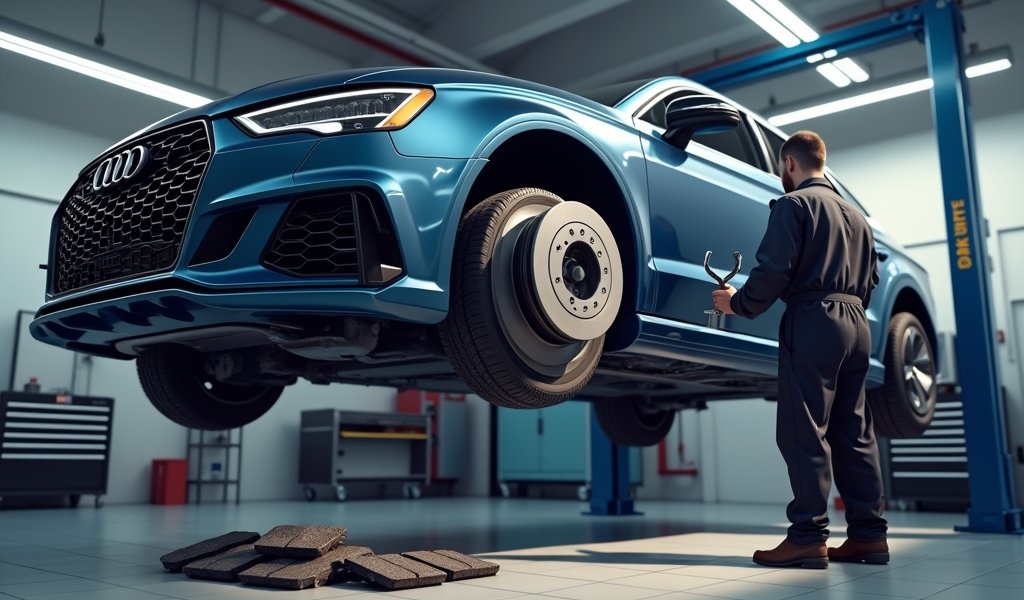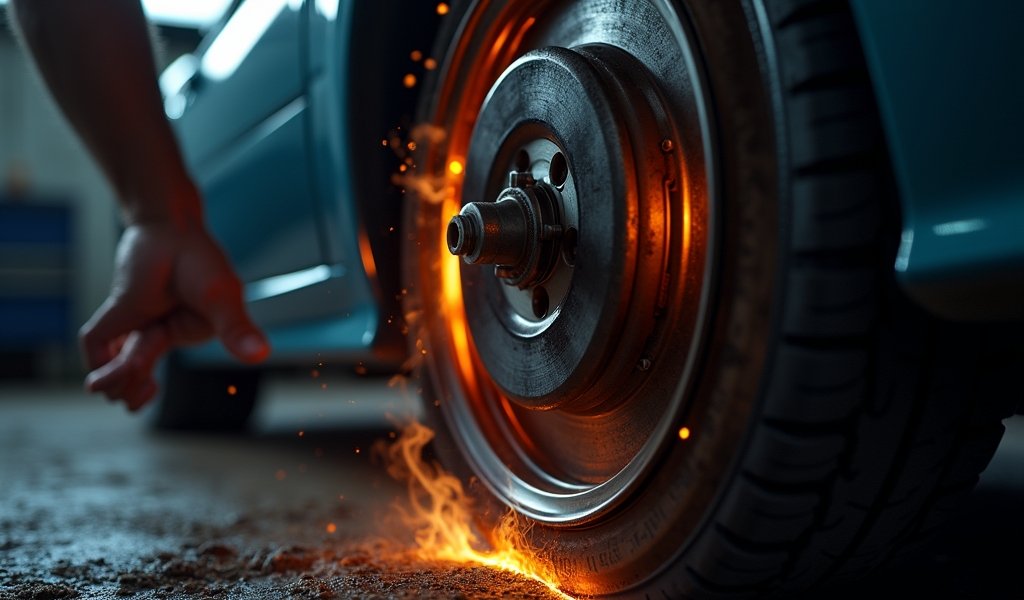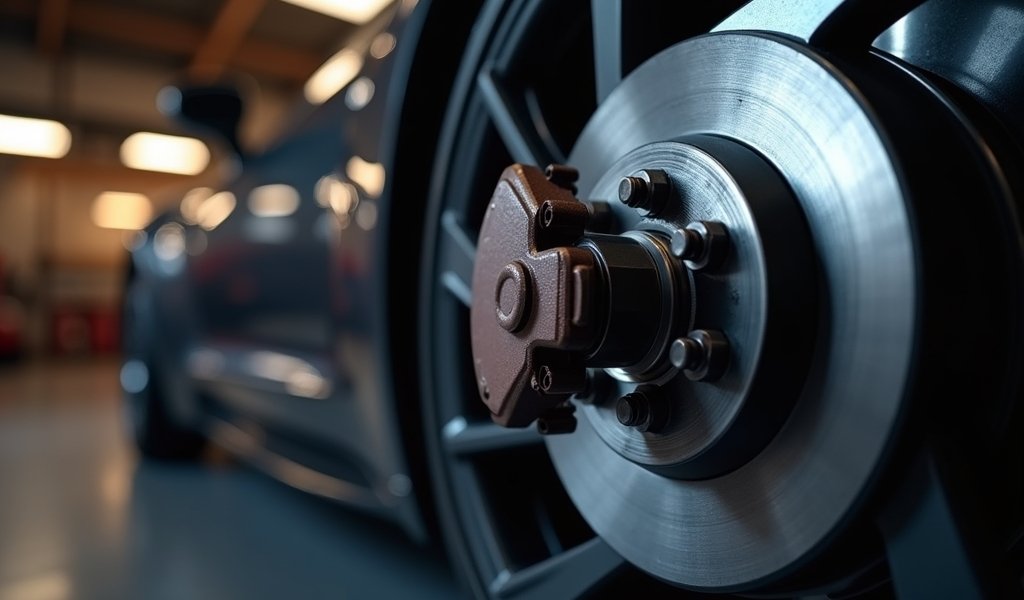Overview
Brake pads typically last 30,000-70,000 miles but should be replaced when they wear down to 2-3mm thickness, produce squealing/grinding noises, or cause longer stopping distances. Regular visual inspections, understanding how driving habits affect wear, and choosing quality replacement pads appropriate for your vehicle are essential for maintaining safety and preventing costly damage to other braking components.
Table of Contents
- Understanding Brake Pads
- Warning Signs: When Your Brake Pads Are Crying for Help
- Visual Inspection: How to Check Your Brake Pads
- Manufacturer Recommendations: What the Experts Say
- Driving Habits: How You Drive Affects Pad Life
- Quality Replacements: Choosing the Right Brake Pads
- Conclusion
- Frequently Asked Questions
Understanding Brake Pads
As a mechanic with 20 years under my belt, I’ve seen thousands of worn brake pads. These small but mighty components are your vehicle’s primary stopping force, and knowing when to replace brake pads isn’t just about maintenance—it’s about safety.
Every time you press that brake pedal, friction material presses against your rotors to slow your vehicle. This friction gradually wears down your pads, making them thinner with each stop. It’s a normal process, but one that requires your attention.
Most brake pads start life with about 12mm of friction material. Depending on your driving style, vehicle weight, and pad quality, they typically last between 30,000 and 70,000 miles. That’s quite a range, isn’t it? That’s because so many factors affect pad wear.
Ceramic pads generally outlast semi-metallic or organic varieties, sometimes pushing toward that 70,000-mile mark. But here’s the thing—these are averages. Your mileage will literally vary based on how and where you drive.
I always tell my customers that following a regular maintenance schedule is the best way to catch wearing pads before they become a problem. Prevention is always easier (and cheaper) than repair.
Warning Signs: When Your Brake Pads Are Crying for Help

Your car is pretty good at telling you when something’s wrong. When it comes to brake pads, there are several unmistakable signals that shouldn’t be ignored.
First up is that high-pitched squealing or squeaking. This isn’t just your car being noisy—it’s actually by design. Most brake pads include wear indicators, small metal tabs that contact your rotors when pad material gets too thin. That contact creates a noise that’s hard to ignore, and that’s exactly the point. It’s your first warning that replacement time is approaching.
If you hear grinding metal—a harsh, unmistakable sound—stop delaying and get to a shop immediately. This means your pads are completely worn through, and metal is grinding against your rotors. At this point, you’re not just facing pad replacement but potentially costly rotor repairs too.
Feel a pulsation or vibration when braking? That often indicates warped rotors, which can result from allowing pads to wear too thin. Your brake pedal might feel different too—softer or requiring more pressure than usual.
Many modern vehicles are equipped with brake wear indicators that trigger dashboard warnings. These electronic warning systems are increasingly common and should never be ignored.
Perhaps most concerning is when your vehicle takes longer to stop. If you’re pressing the pedal and noticing increased stopping distance, worn pads are a likely culprit. This is particularly dangerous in emergency situations where every foot matters.
Visual Inspection: How to Check Your Brake Pads
You don’t need to be a mechanic to perform a basic brake pad inspection. With a flashlight and a few minutes, you can get a decent idea of your pad condition.
Start by looking through your wheel spokes. In most vehicles, you can spot the brake pad pressed against the rotor. What you’re looking for is thickness—how much friction material remains.
New pads typically start with about 12mm of material. If what you’re seeing looks less than 3-4mm thick, it’s time to start planning for replacement. When thickness hits 2-3mm, replacement becomes urgent.
Can’t see well enough through the wheels? Some vehicles make it difficult. In that case, consider removing the wheels for a better look, but only if you’re comfortable doing so safely with proper equipment.
I recommend checking your brake pads during routine vehicle inspection or tire rotations (every 5,000-7,000 miles). This regular schedule helps catch wear before it becomes problematic.
If you’re not comfortable doing this yourself, any reputable shop will check your brake pad thickness during a routine oil change if you ask. Many will do it at no charge. It takes us just a minute, and we’d rather see you safe.
Manufacturer Recommendations: What the Experts Say
Every vehicle has its own personality when it comes to brake wear. That’s why manufacturers provide specific guidelines in your owner’s manual.
These recommendations aren’t arbitrary—they’re based on your vehicle’s weight, braking system design, and expected use patterns. Your manual might suggest brake inspections at specific intervals, often every 12,000 miles or during regularly scheduled maintenance.
But here’s something important I tell all my customers: manufacturer recommendations are minimum guidelines. Your actual needs may require more frequent attention depending on your driving style and conditions.
Heavy SUVs and trucks typically need more frequent brake service than lightweight sedans—sometimes twice as often. The extra weight means more momentum to stop, which translates to more wear on those pads.
Performance vehicles with high-performance braking systems often have their own unique requirements. These specialized systems may need different types of pads or more frequent replacements to maintain optimal performance.
Can’t find your manual? Most manufacturers now provide digital versions online. A quick search with your vehicle make, model, and year plus “owner’s manual” should help you locate the information.
Following manufacturer guidelines is particularly important for newer vehicles still under warranty. Neglecting recommended brake service could potentially impact warranty coverage for related components.
Driving Habits: How You Drive Affects Pad Life
I’ve seen two identical cars with wildly different brake pad life, and the difference almost always comes down to one thing: the driver. Your driving habits have an enormous impact on how long your brake pads last.
City drivers who face constant stop-and-go traffic will wear through pads faster than highway commuters. Each stop requires friction, and more stops mean more wear. If your daily drive includes lots of traffic lights and congestion, expect to replace your pads more frequently.
Do you live in a hilly or mountainous region? Downhill driving requires constant braking to maintain safe speeds, which generates heat and accelerates pad wear. In these environments, using lower gears to help control your speed can reduce wear on your braking system.
Carrying heavy loads or towing trailers? The extra weight demands more from your brakes. If you regularly haul heavy items or tow, your brake pads are working overtime. Consider upgrading to heavy-duty pads designed specifically for these conditions.
Your braking style matters too. Drivers who habitually brake hard or wait until the last minute to stop are much harder on pads than those who plan ahead and brake gradually. Developing smoother braking habits not only extends pad life but improves fuel efficiency and passenger comfort.
Based on studies by the American Automobile Association, aggressive driving can reduce brake pad life by up to 40%. That’s a significant difference that translates directly to your maintenance budget.
Quality Replacements: Choosing the Right Brake Pads

When it’s time for new brake pads, quality matters more than you might think. I’ve seen plenty of customers try to save money with budget pads, only to return twice as often for replacements.
There are four main types of brake pads, each with distinct characteristics:
- Ceramic pads: These are quieter, produce less dust, and typically last longer. They cost more upfront but often deliver better value through extended life.
- Semi-metallic pads: Offering good heat dissipation and durability at a moderate price, these are popular for everyday driving.
- Organic pads: Made from materials like rubber and glass, these are softer and quieter but wear more quickly.
- Performance pads: Designed for high-performance vehicles and driving, these provide enhanced stopping power but may wear faster and produce more noise and dust.
Investing in higher-quality brake pads typically results in longer service life, better braking performance, reduced noise, and less wear on other braking components like rotors. The price difference between budget and quality pads is usually around 30-50%, but the lifespan can be nearly twice as long.
For most drivers, I recommend mid-to-high quality range pads as they offer the best balance of cost and performance. If you plan to keep your vehicle for several years, the investment in better pads pays off.
When it comes to installation, this is one area where professional service provides peace of mind. While brake pad replacement is within reach of skilled DIY mechanics, improper installation can compromise safety. A quality car service center will not only install the pads correctly but also inspect the entire braking system.
Remember, brake pads don’t exist in isolation—they’re part of an integrated system. When replacing pads, it’s worth having rotors, calipers, and brake fluid checked as well. Often, these components need attention at the same time, especially if pad replacement has been delayed.
Conclusion
Knowing when to replace brake pads isn’t just about avoiding that embarrassing squeal—it’s about keeping you and your passengers safe on the road. By paying attention to warning signs, performing regular visual inspections, following manufacturer recommendations, adjusting for your driving habits, and choosing quality replacements, you can maximize both safety and value.
Throughout my years working on vehicles, I’ve seen how proper brake maintenance prevents accidents and saves money. Those squealing brakes aren’t just annoying—they’re your car’s way of asking for help.
Remember, brake pads are designed to wear out. They sacrifice themselves to keep your vehicle stopping safely. The question isn’t if they’ll need replacement, but when. Being proactive about this maintenance item prevents more expensive repairs and ensures your vehicle stops when you need it most.
Take a moment today to consider when you last had your brakes inspected. If it’s been more than 10,000 miles or if you’re experiencing any warning signs we’ve discussed, schedule an inspection soon. Your safety is worth far more than the cost of new brake pads.
Frequently Asked Questions
How often should brake pads be replaced?
Most brake pads last between 30,000 and 70,000 miles depending on driving habits and pad quality. Check your specific vehicle’s manual for manufacturer recommendations.
How much does it cost to replace brake pads?
Brake pad replacement typically costs between $150 and $300 per axle including parts and labor. Premium pads or vehicles requiring special parts may cost more.
Can I drive with squeaky brake pads?
While you can technically drive with squeaky brake pads, the noise is often an early warning that replacement is needed soon. Continued driving risks more expensive damage.
Should I replace all brake pads at once?
Yes, brake pads should always be replaced in axle pairs (both front or both rear) for balanced braking performance. Uneven braking can be dangerous and cause handling problems.
How do I know if I need new rotors with my brake pads?
Rotors usually need replacement if they’re scored, grooved, warped, or below minimum thickness specifications. A mechanic can measure them during brake service to determine if replacement is necessary.


Pingback: Brake Pad Compound Selection: 5 Top Tips - knowsyourcar.com